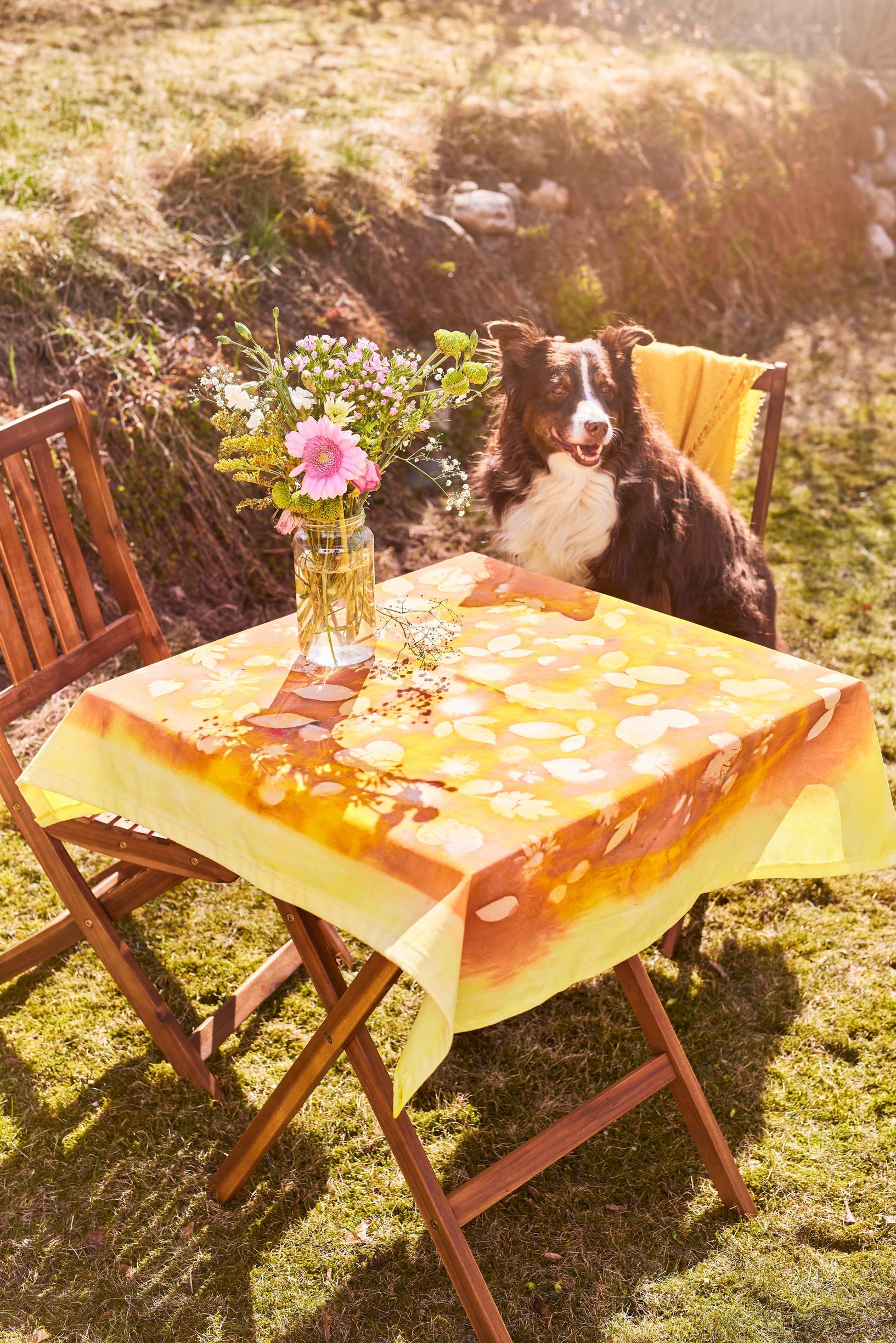
Solar dyeing on fabric—harness the summer light and create patterns with plants
Solar dyeing or sun dyeing is a fabric decorating technique that always adds a bit of a surprise. You soak your fabrics in dye, decorate them with plants, and let them dry in the sun. Get inspired by these ideas for sun-dyed textiles!
Solar dyeing—materials
Various leaves, branches, and flowers (pressed), plus some old lace
Cotton, silk, or linen fabrics, tablecloths, towels, or other textiles
Large and small bowls or a bucket for bigger pieces of fabric
Stirring sticks
Paintbrushes or a spray bottle
A large plywood board or similar base
A large plastic sheet to protect the table
Emo fabric paint or a similar product
Emo spray emulsion or a similar product
Plastic gloves.
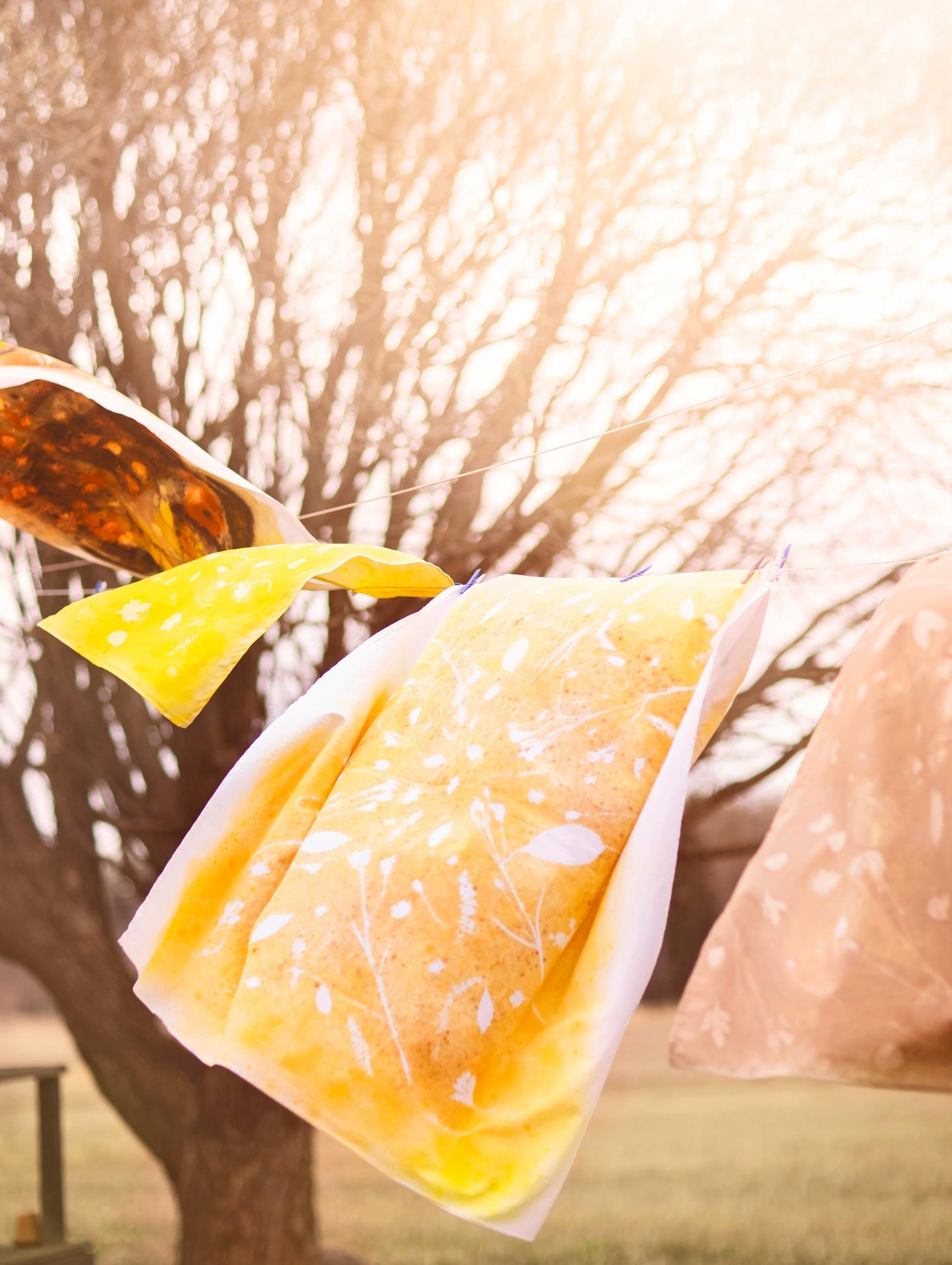
Solar dyeing—instructions
Preparation
Wash your fabrics and protect your table. Press or flatten flowers and plants under a weight for a few hours or overnight, or briefly iron them on low heat between sheets of baking paper. Mix your dyes. For light, watercolor-like hues, dilute the dyes with water. For more intense shades, mix 1 dl of spray emulsion with 30 drops of pigment. Around 3 dl of dye mixture is enough for roughly 1 m of fabric. You can buy brown dye or mix it yourself from yellow, red, and blue. In this project, we used yellow, lemon yellow, sand, brown, red, carmine, and navy blue.
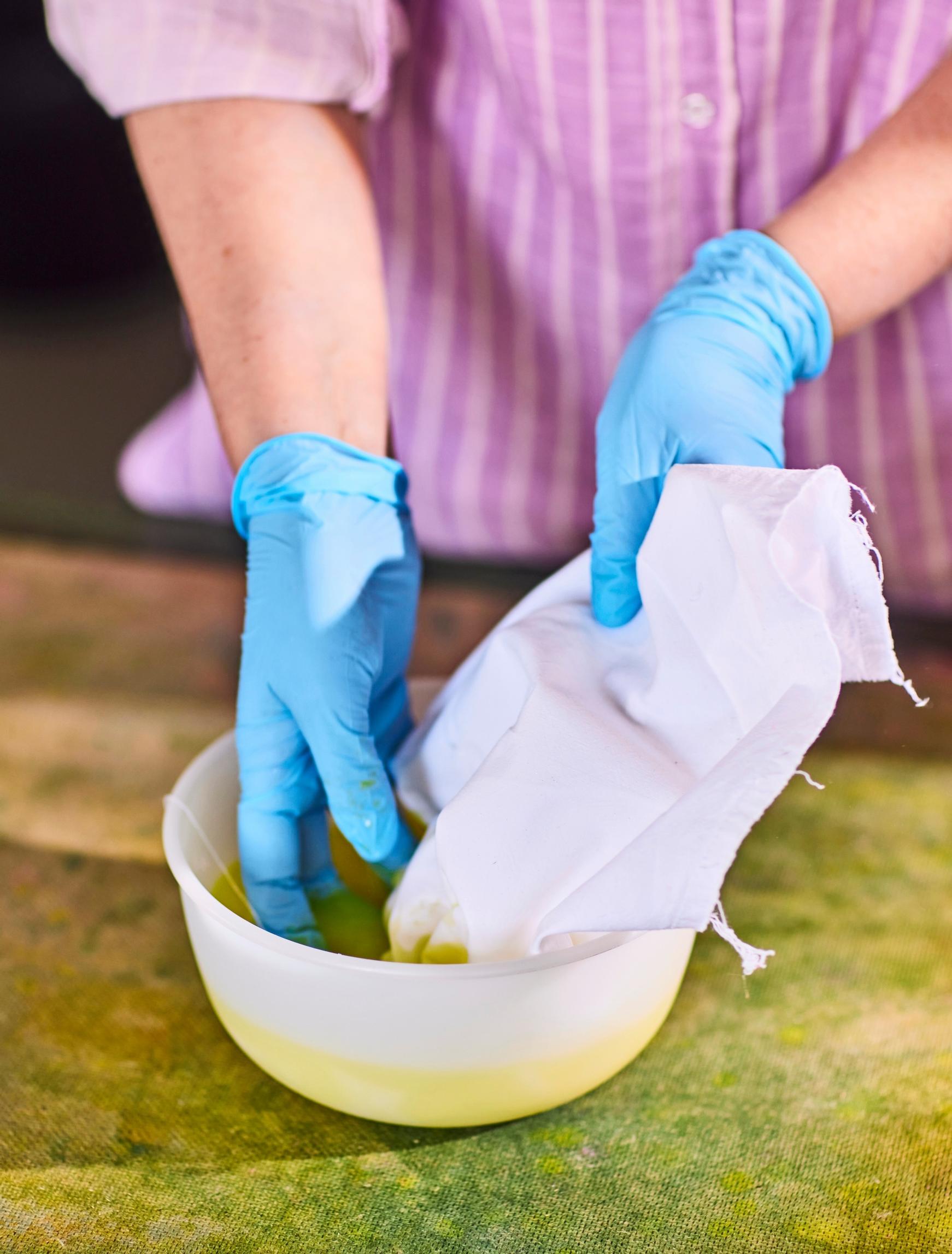
1. Dye the base of the fabric by dipping it into a fabric paint–water mixture, or use spray emulsion for a deeper color. In the example shown, 0.5 dl of yellow fabric paint was mixed with 3 dl of water. You can also skip the base color and just soak the fabric in water.
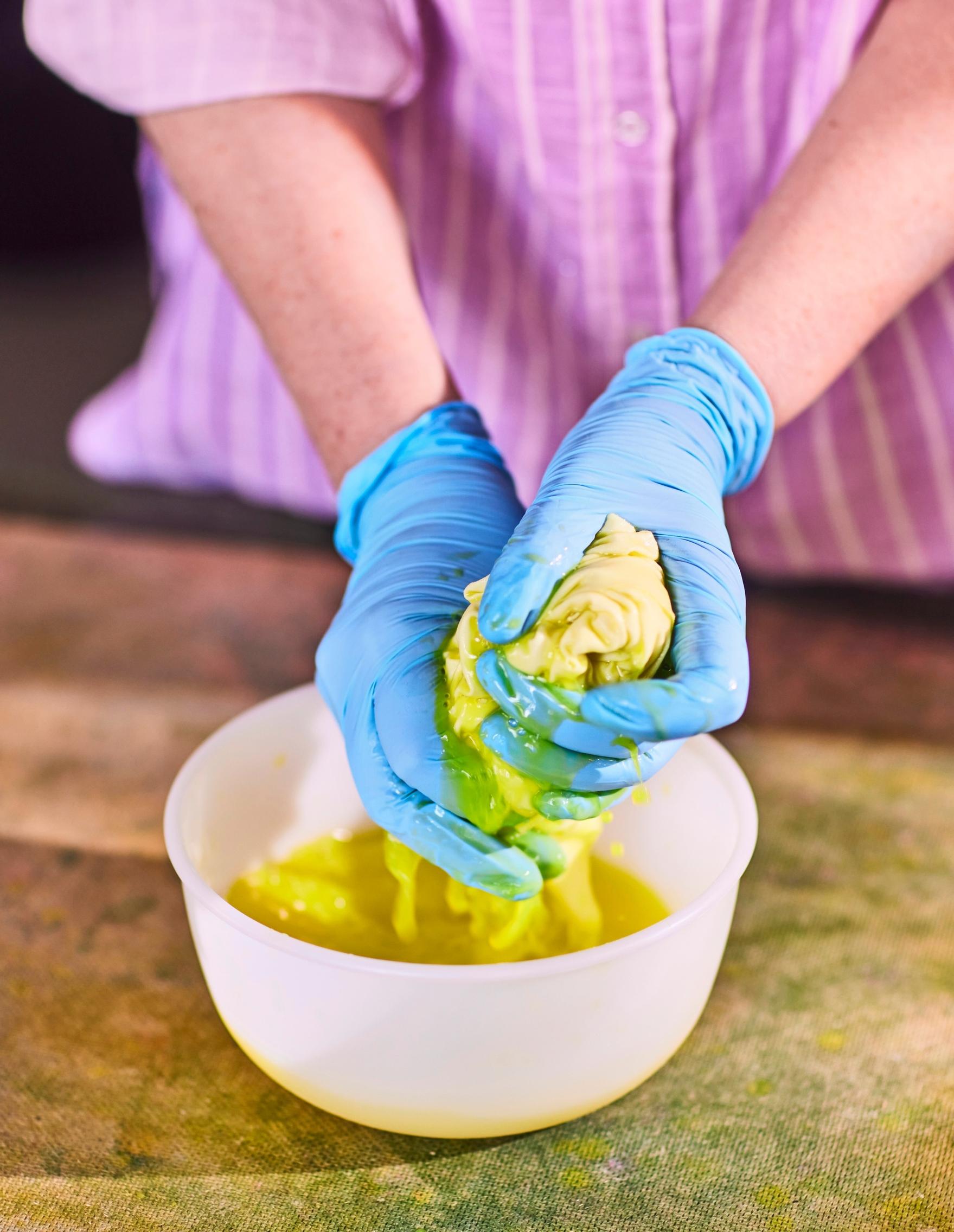
2. Squeeze out excess liquid, but leave the fabric damp or wet. A wet fabric creates a watercolor-like effect.
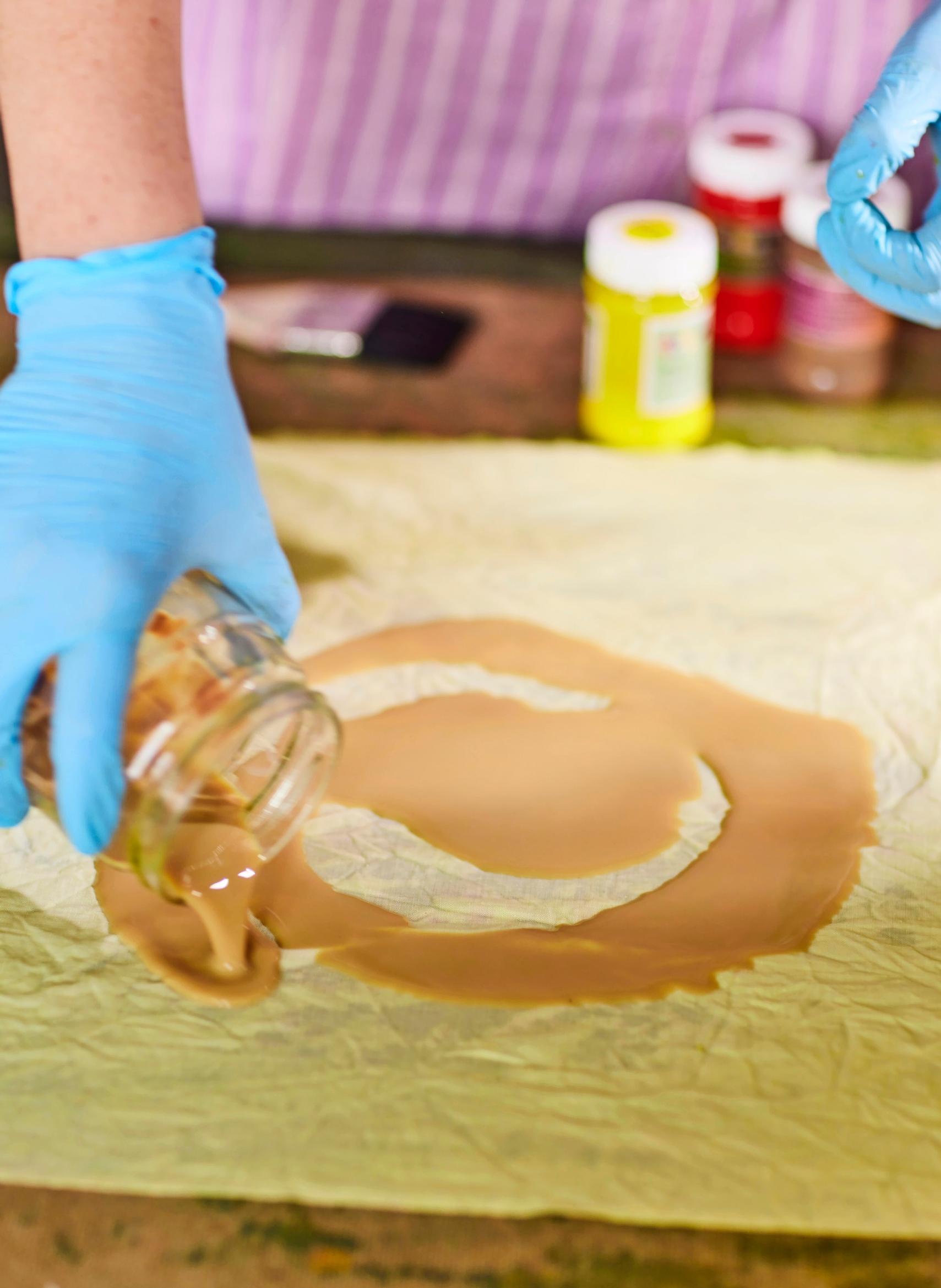
3. Pour the next color onto the fabric and either spread it or leave it in patches to create a multi-colored base. You could also use just one color. The brown in the photo is diluted with water.
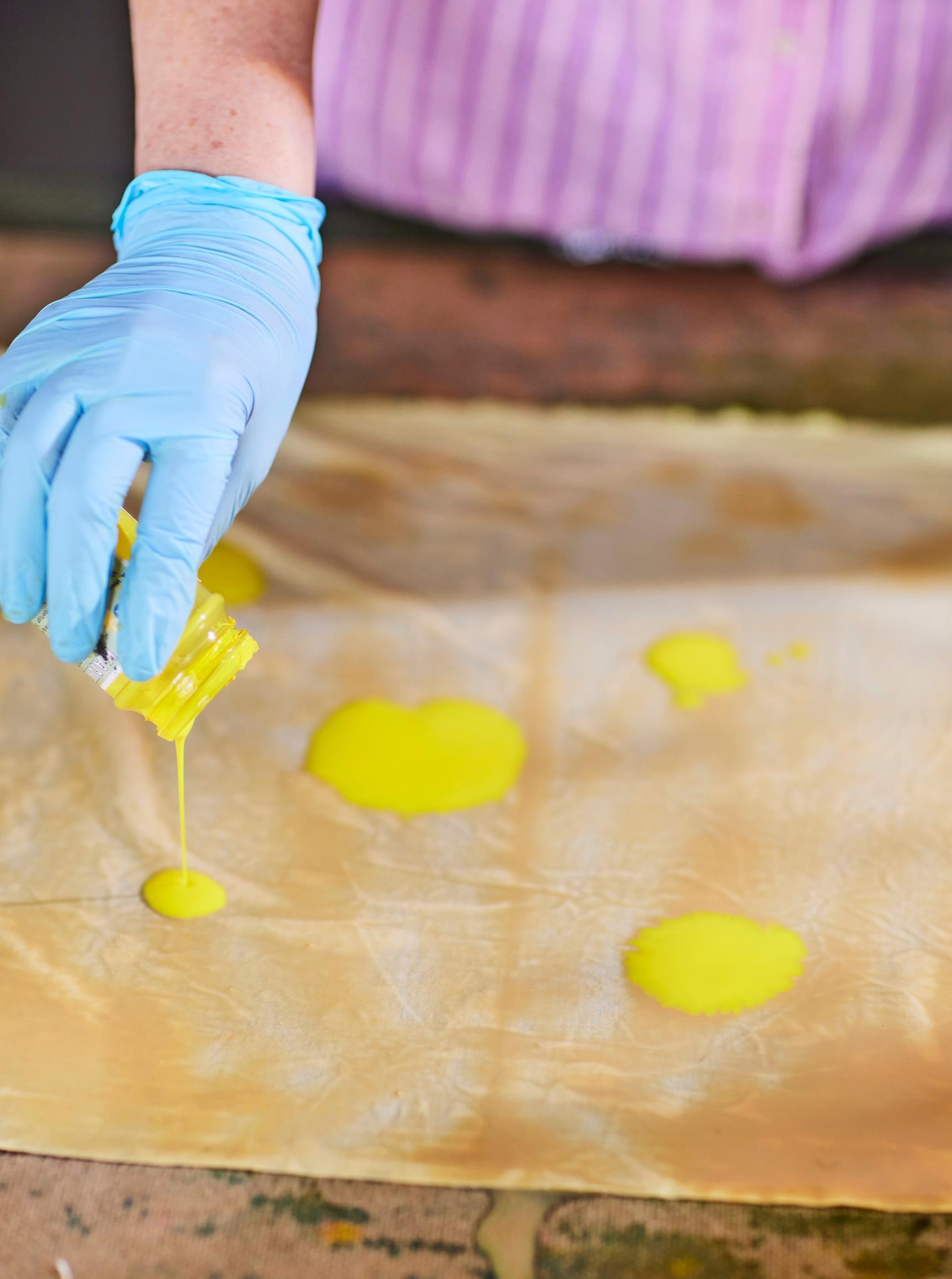
4. If you like, add another shade. You can also use a spray bottle to create a speckled effect on thinner fabrics like cotton or silk. A paintbrush works well on heavier cotton or linen.
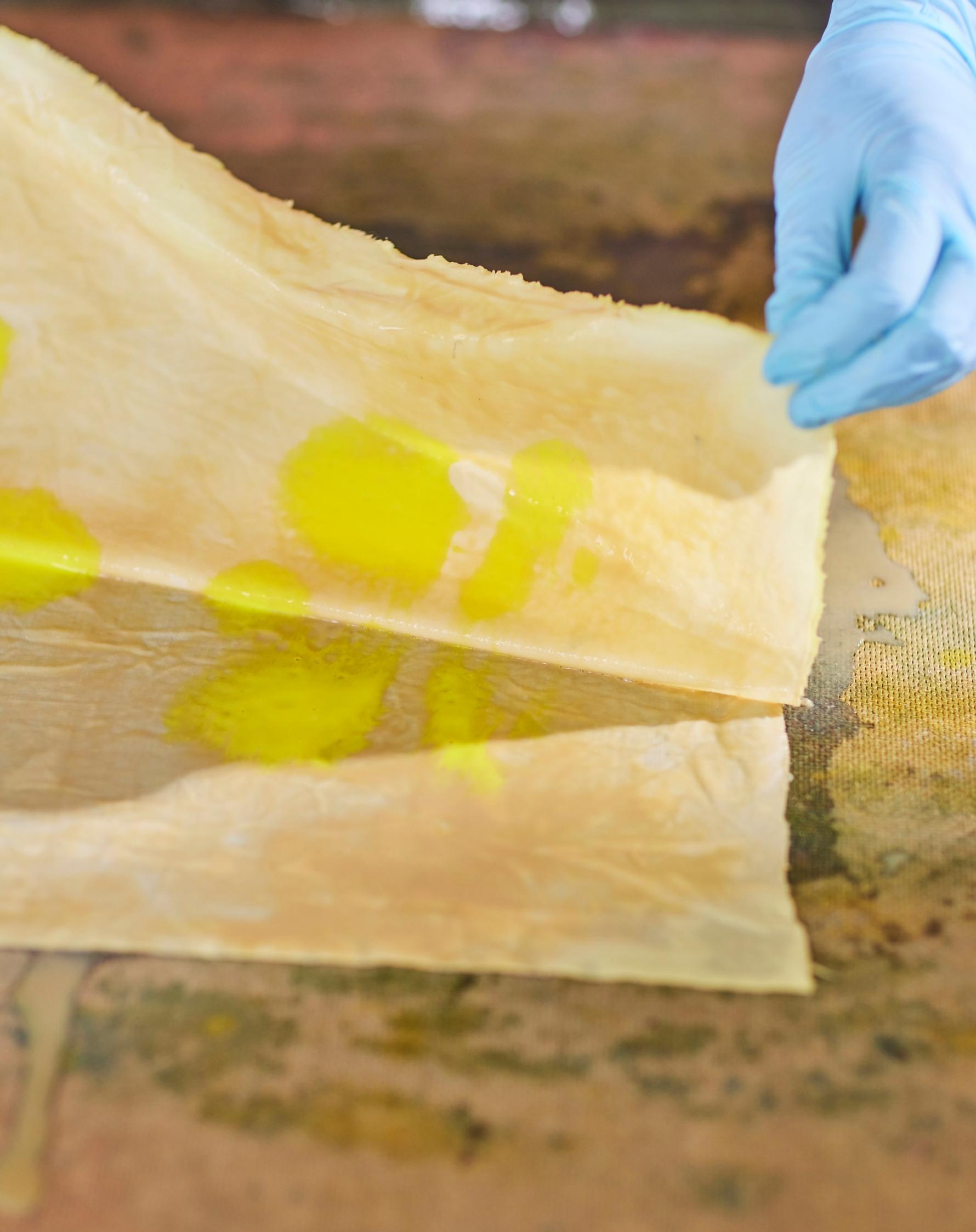
5. Fold the wet fabric in half vertically and then horizontally to spread the dye. You can also work the dye into the fabric by hand.
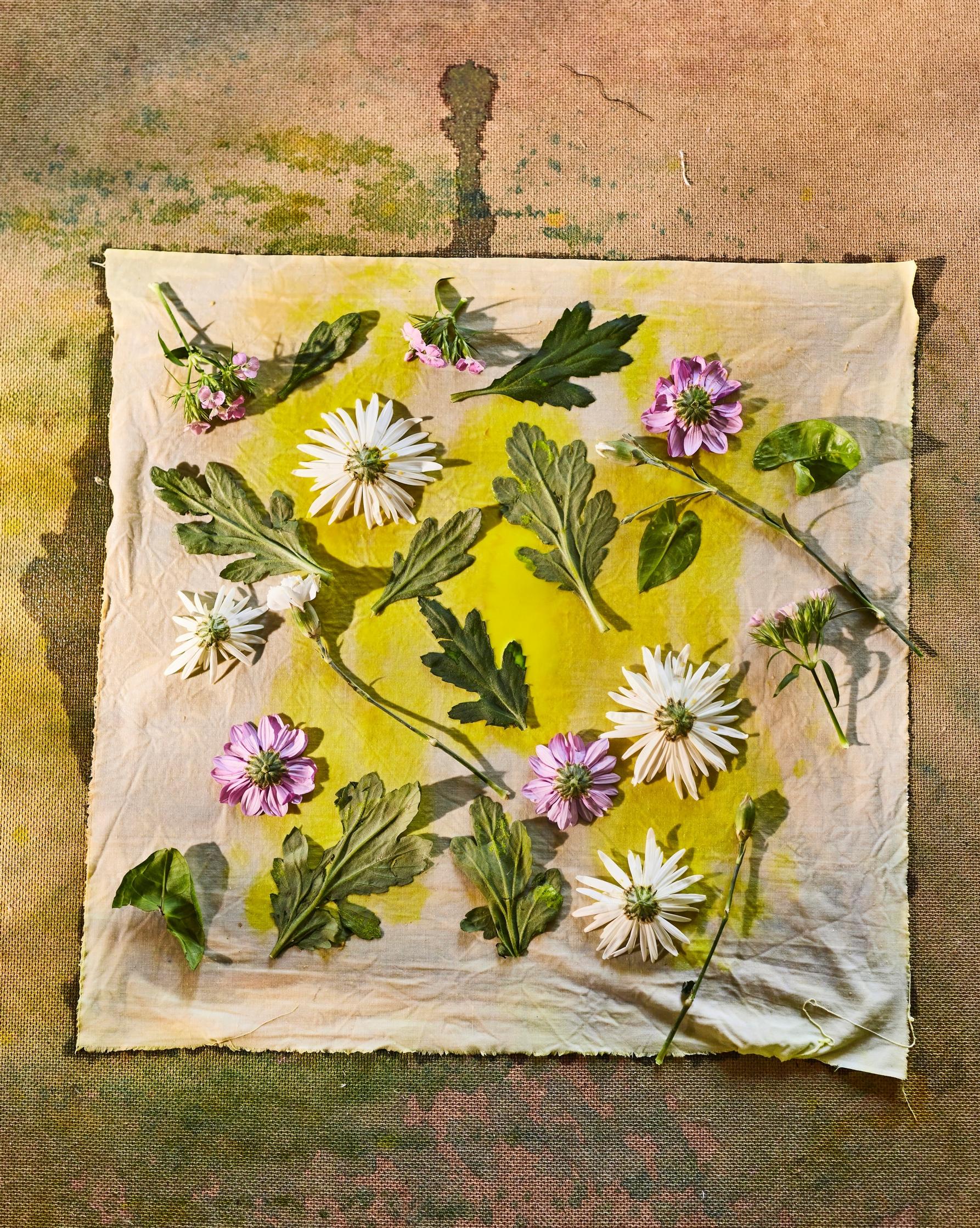
6. Quickly press flowers and plants onto the wet, dyed fabric. Let it dry in the sun where it’s not windy. If needed, spray it again and iron through a thin cloth on high for about 30 seconds per area. Afterward, you can machine-wash the finished items at 40°C.
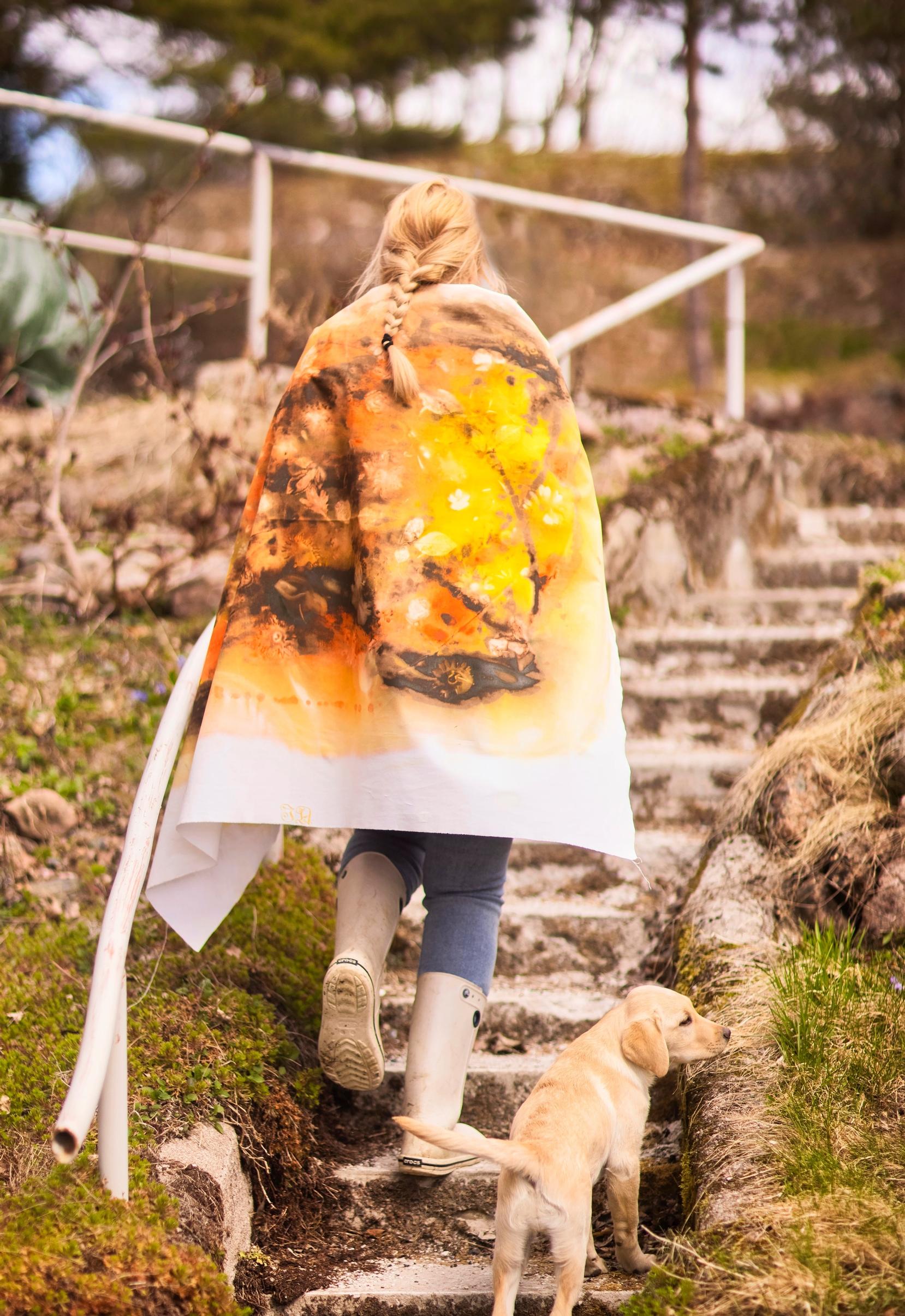
Apply the instructions this way—6 ideas
Sunshine tablecloth
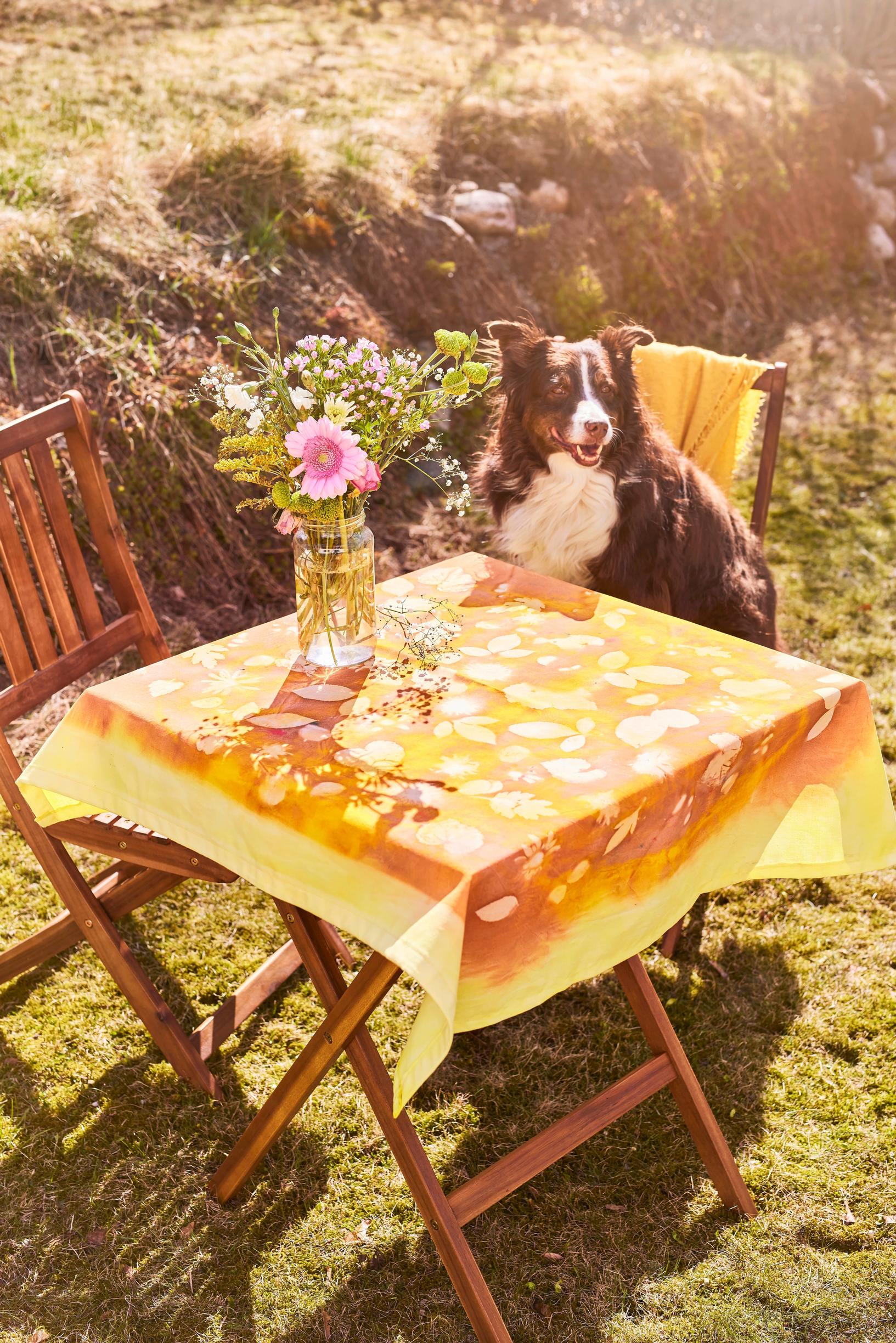
Soak a cotton tablecloth completely in a yellow water-and-fabric-paint mixture. Squeeze out the extra water. Lay it on a large surface and use your hands to smooth it flat. Pour brown and bright-yellow dye onto the wet cloth in turns. Blend the colors by folding the cloth in half and pressing gently. Unfold it and press leaves and flowers onto the cloth. Let it dry in the sun, remove the leaves, then iron it.
Flower garden napkins and table runner
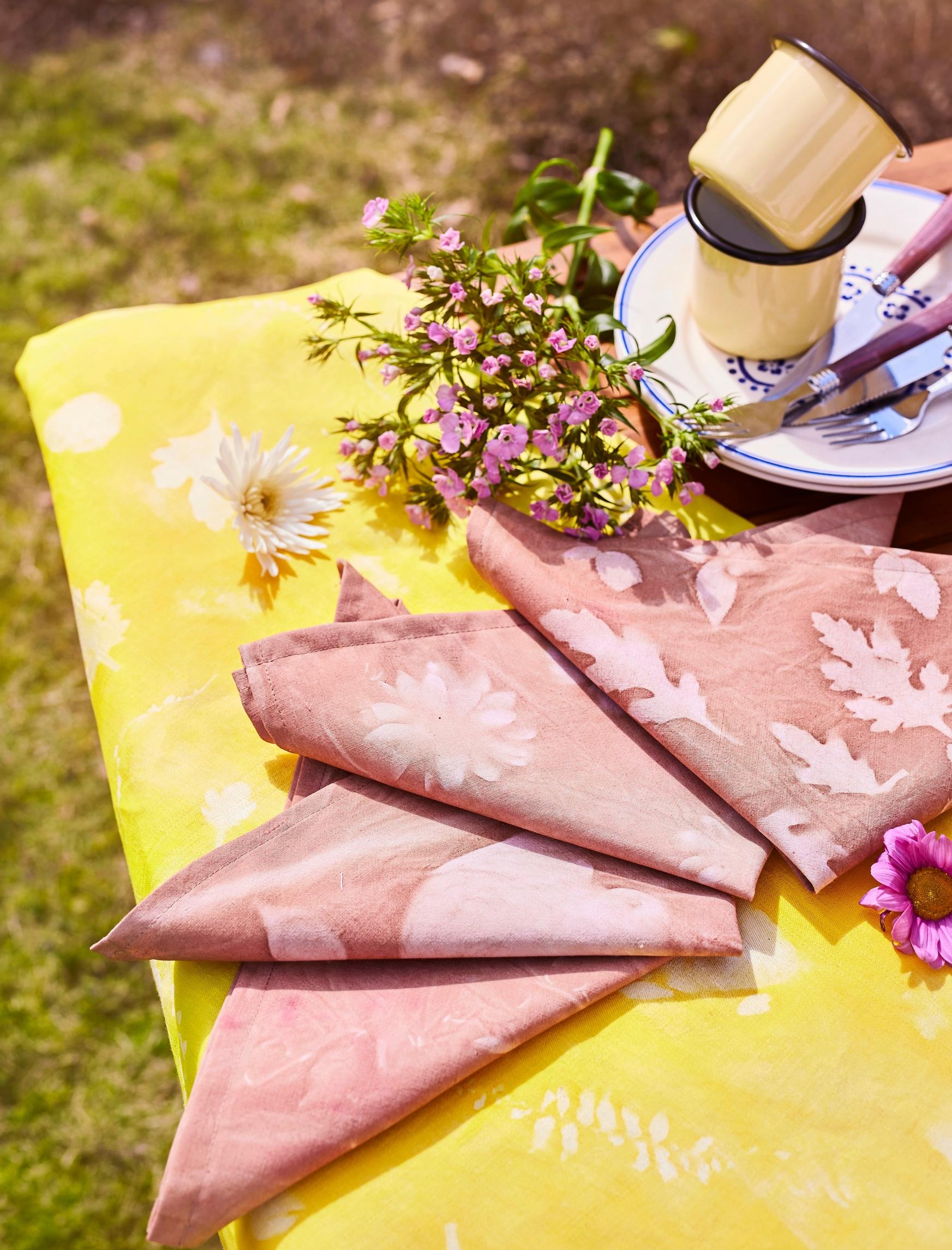
Soak 35 x 35 cm cotton napkins and a linen table runner in water, then squeeze out the extra. Place the fabrics on your surface and paint the napkins with brown fabric paint–spray emulsion using a wide brush. Paint the runner with bright yellow. Arrange different flowers, leaves, or branches on each napkin and a mix of them on the runner. Let them dry in the sun, iron, and sew the edges if needed.
Sun-bloom bottle covers
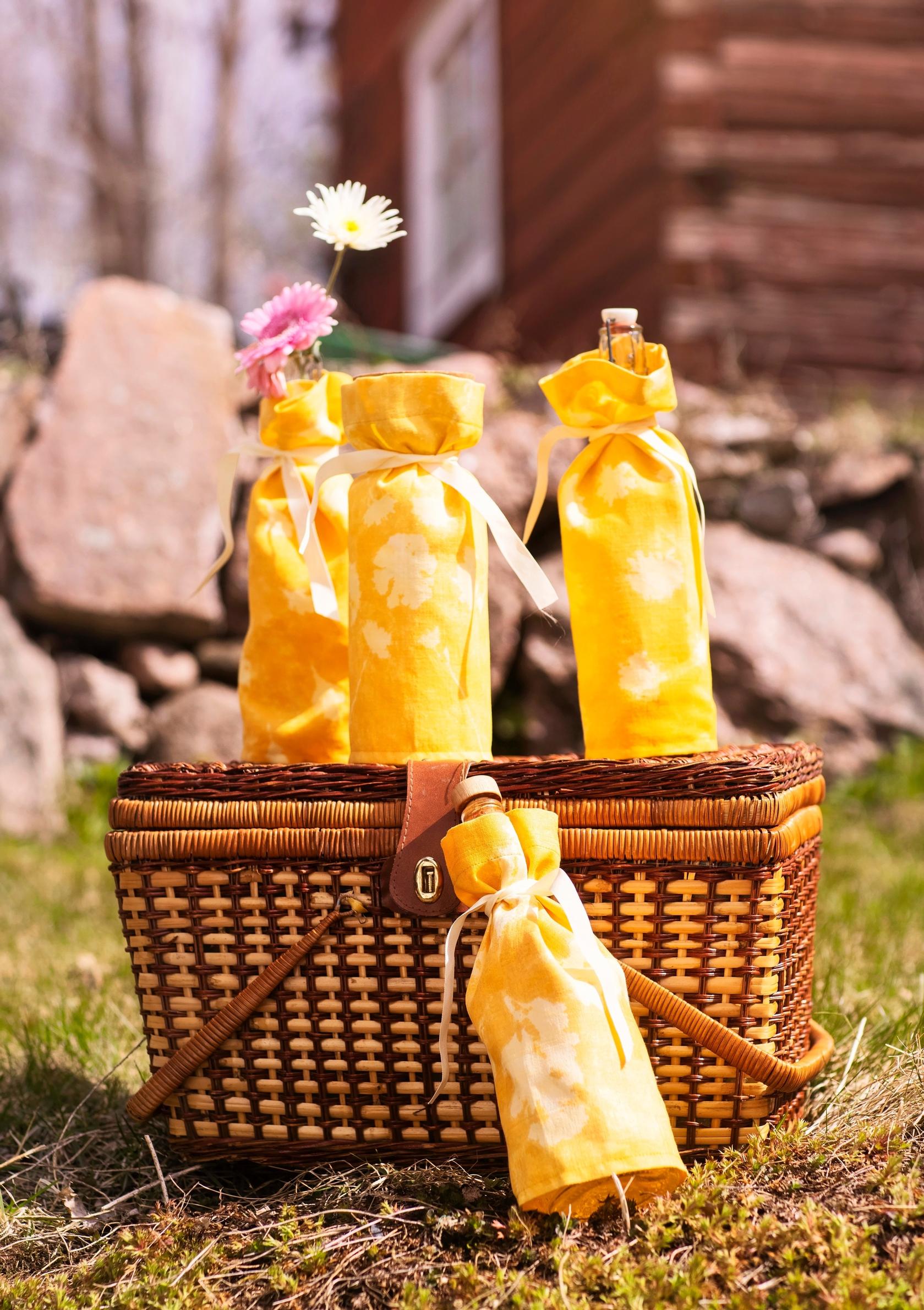
Measure the bottle’s circumference and height. Cut your fabric pieces, adding 1 cm for seams and 4 cm for the top fold. Follow the previous dyeing steps. Sew the long edge and finish the edges. Then sew the bottom edge with a 1 cm seam allowance, and fold down the top by around 3.5 cm. Iron it, then tie a decorative ribbon around the bottle’s neck.
Linen branch towels
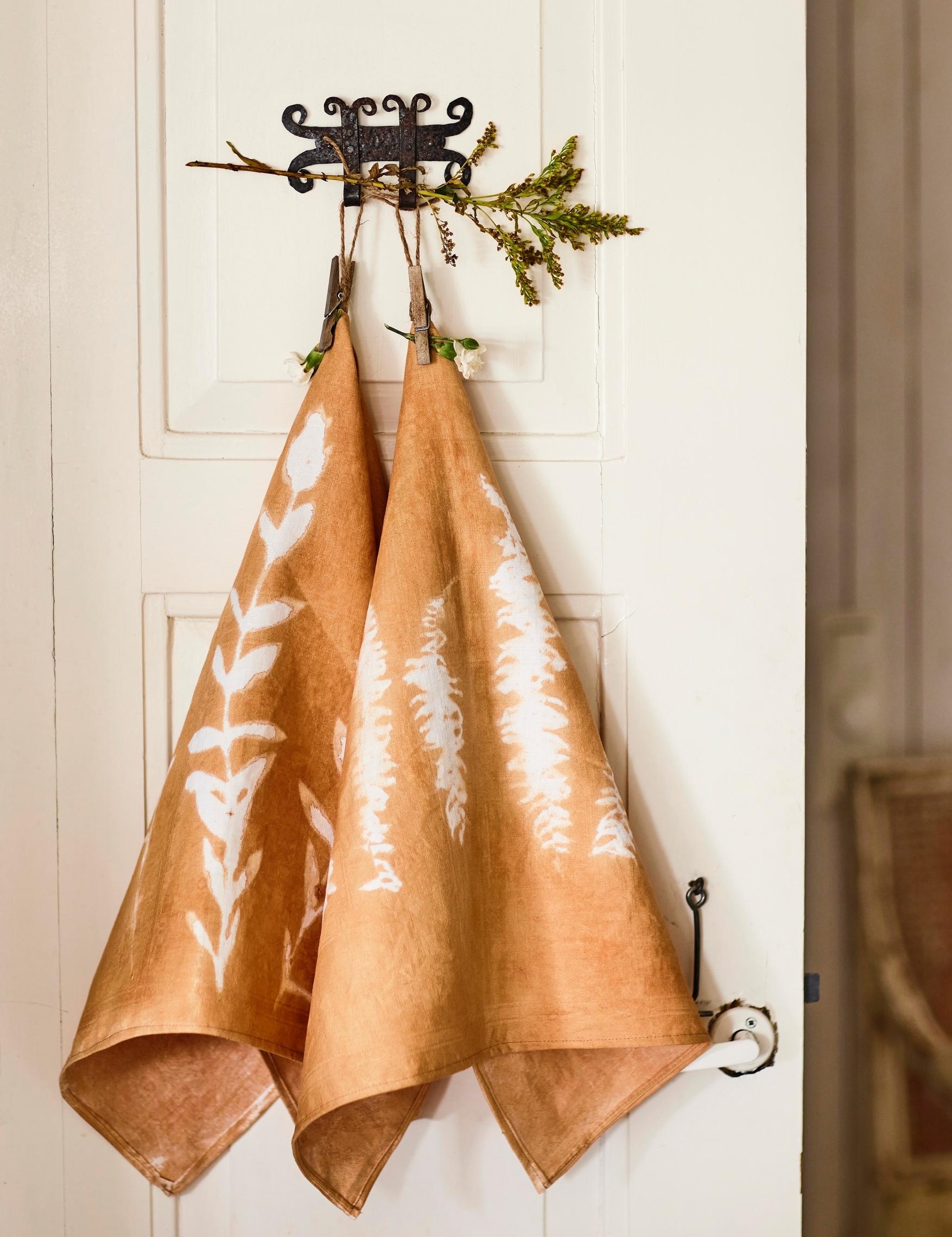
Give old, worn-out linen cloths a second life. Cut off frayed edges, then soak the linen in a brown dye mixture. Lay the material on your surface and place a few long branches on each piece. Let them dry. Shift the plants slightly halfway through drying to create a fun shadow effect. Iron and sew new hems along the edges.
Summer day pillowcases
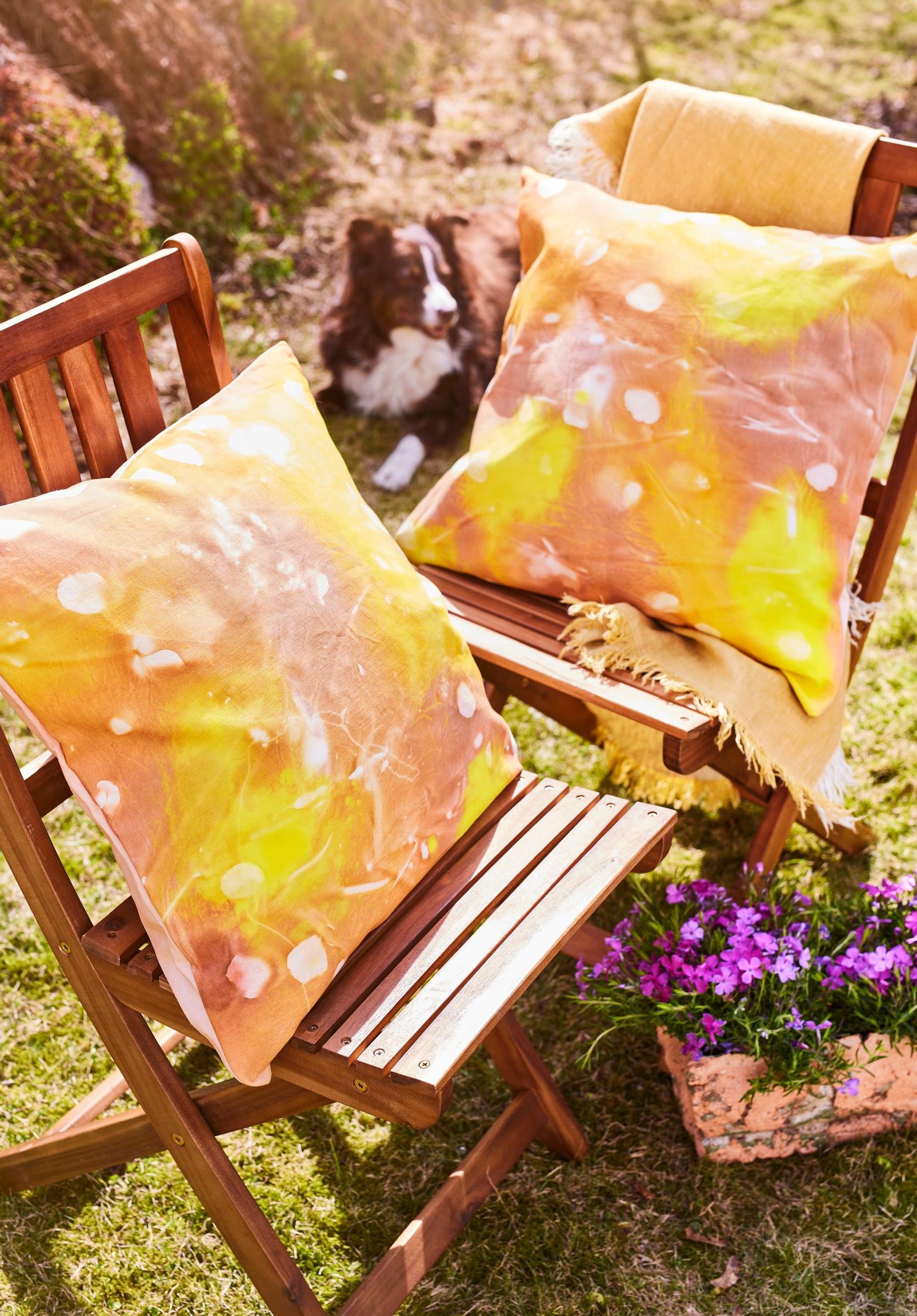
Cut two 52 x 62 cm pieces of fabric. Sun dye the top pieces as described before, and dip the bottom ones in the dye mixture. Keep the fabric slightly wrinkled for line effects, then press leaves onto it and let it dry. Iron. Finish the top edges of both pieces with a zigzag stitch. With right sides facing, sew 10 cm from each top edge, leaving an opening for the pillow. Fold down the 10 cm allowance at the top, pin, and sew the remaining seams. Finish the edges with a zigzag stitch. Turn the case right side out.
Keepsake décor boards
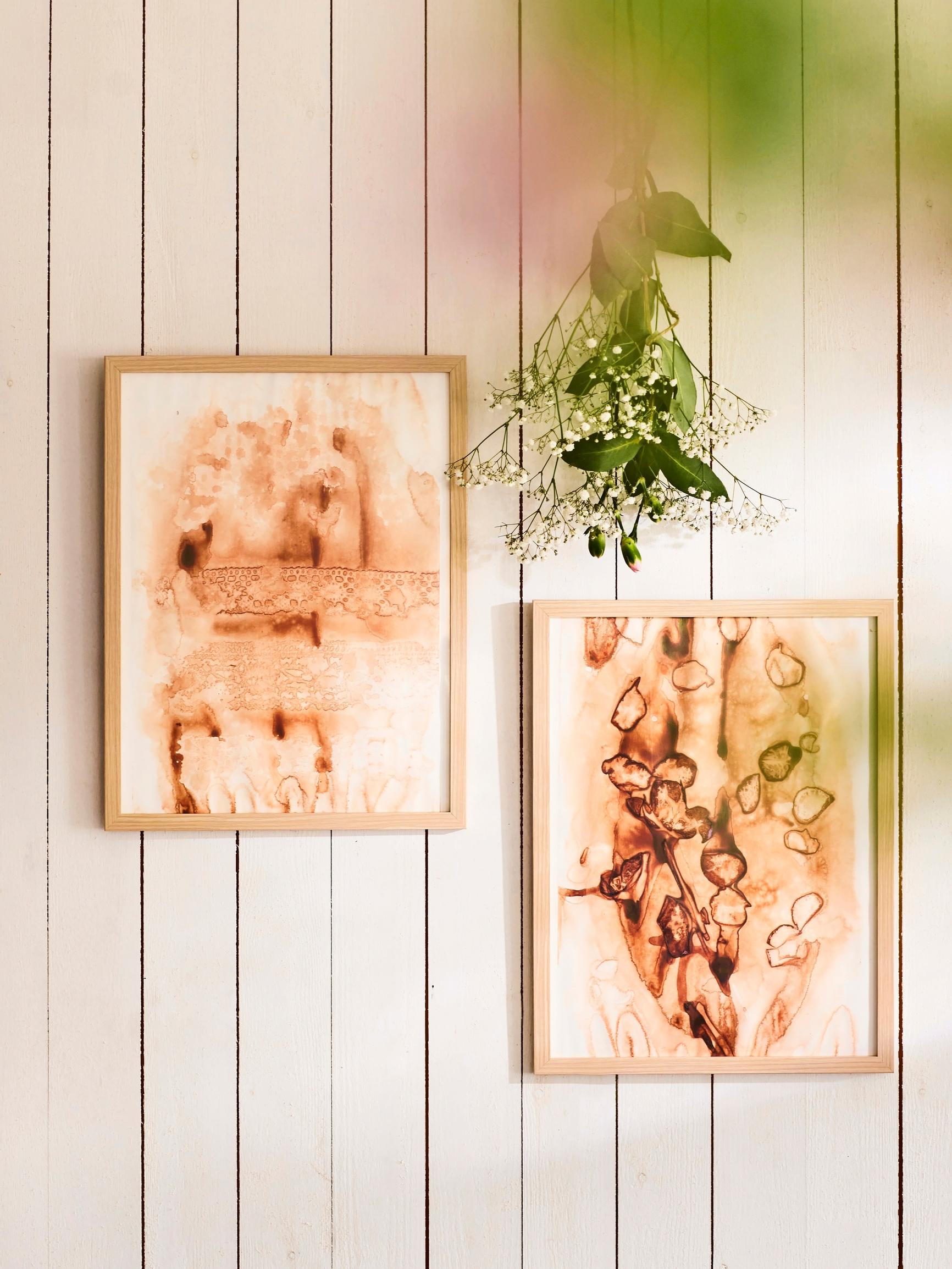
Tape watercolor paper to your surface. Thoroughly wet the entire sheet with a brush. Then apply a few strokes of brown fabric dye diluted with water. Press old lace ribbons or flattened, dried branches and flowers onto it. Let it dry. Paper takes longer to dry than fabric. Trim the edges and frame it.


